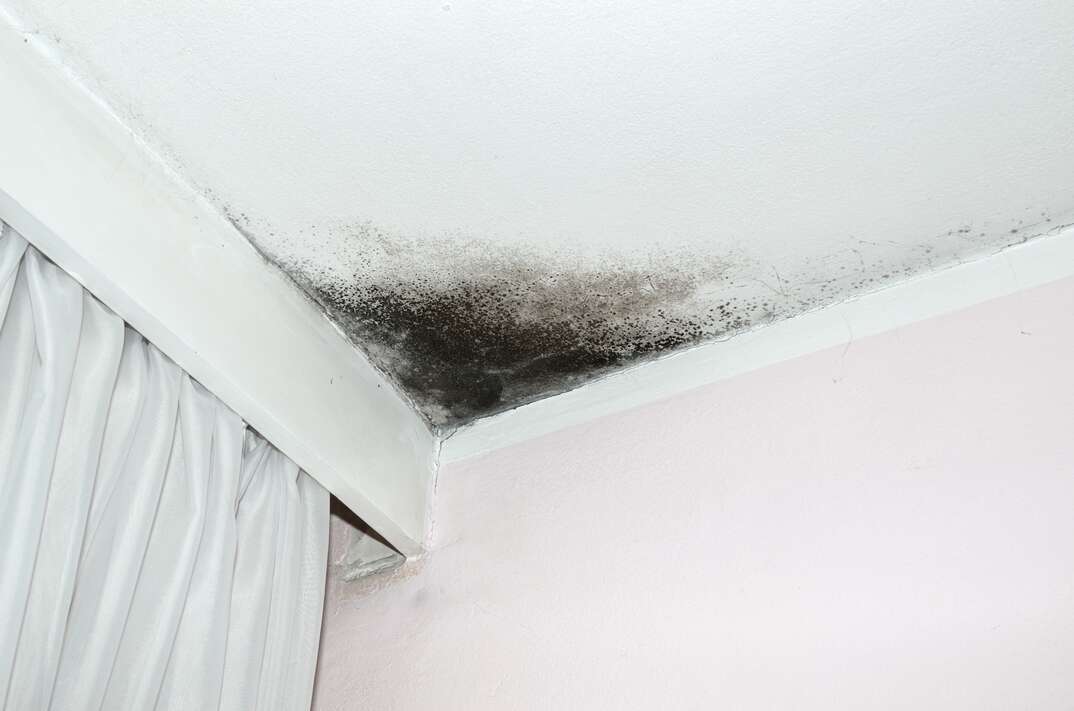What Should You Do If You Find Mold in Your House?

Of all the common home maintenance issues, finding furry mold lurking in your shower or basement is probably the grossest. However, a mold infestation isn't just ick-inducing. It can sometimes cause serious health issues, especially if you have a mold allergy or a preexisting respiratory condition.
Read More Home Improvement Articles
Knowing what to do if you find mold can help you resolve an infestation quickly and make your home healthier and more pleasant.
What Does Mold Look Like?
Various mold species can grow inside your home. Therefore, what it looks like depends on the type of mold growth you have.
Mold in a house can be black, brown, green, orange or white. It may have a fuzzy appearance or cause stains on your walls, windowsills or floors.
Despite its name, black mold isn't always black. It can also contain brown, green or orange tinges and usually looks furry. Often, black mold appears gray, green or white in the early stages and turns darker as it grows.
Black mold can grow in various shapes but often forms small circles. However, a severe infestation may mature into a large, irregular-shaped patch covering a larger area. The texture of black mold typically depends on the environment. It usually looks slimy or glossy in wet environments like bathrooms and kitchens and powdery in dryer areas.
How Can You Find Mold in Your House?
The most obvious symptom of mold in the house is visible patches of mold growing on the walls, floors, ceilings or fixtures, and you're more likely to get a mold problem in moist areas such as basements. However, it's worth knowing the other telltale signs of a mold infestation to help you detect mold growth in hidden places.
Mold produces a musty smell, which some people liken to the odor of rotting plants. However, you can grow accustomed to the smell of mold in your own home. Asking a friend or family member to come and check for unpleasant odors in your home can help you determine whether you have a mold issue.
Understanding where mold grows can also help you detect and remediate any growth before it becomes a bigger issue. Mold flourishes in damp environments, so it's worth inspecting areas of your home that are more prone to getting wet. Leaks, drainage issues and other types of water damage can also increase the risk. If you notice damp spots inside your home, you should inspect them for signs of mold.
More Related Articles:
- How Much Does a Home Inspection Cost?
- 4 Tips for Hiring a General Contractor for Your Next Remodeling Project
- Should You Hire a Contractor or a Handyman?
- 5 Things to Look For When You're Hiring an Electrician
- What to Look for When Hiring an Exterminator
What to Do If You Find Mold
You should remove mold as soon as you find it to prevent the health problems associated with inhaling mold spores. However, it's also essential to establish why you have a mold problem in the first place. Calling a professional to diagnose and repair any leaks or other issues causing dampness will prevent the problem from recurring.
It's usually best to remove wet or moldy soft furnishings and floor coverings, but you may be able to salvage these materials if you dry them immediately. Replacing carpets with waterproof alternatives in bathrooms and kitchens can help discourage mold growth on the floor.
Another factor to consider is ventilation and humidity. Using an air conditioner or dehumidifier can reduce the moisture in your home and prevent mold from growing back after you clean it. Adding extra ventilation and painting walls with mold-inhibiting paint can also make bathrooms, kitchens and other moist areas more resistant to mold.
Should You Attempt to Clean Mold Yourself?
You can clean mold yourself, but the Centers for Disease Control and Prevention recommend calling a professional mold remediation company if the mold covers over 10 square feet.
To DIY, you can use up to 1 cup of household bleach diluted in a gallon of warm water to remove mold from solid surfaces like walls and ceilings. Porous materials such as wood may need replacing.
Alternatively, you could consider purchasing a mold removal spray from your local DIY shop or spraying the affected area with cleaning vinegar before wiping any visible mold away. However, you should never mix bleach with vinegar or other cleaning products because it can produce poisonous gas.
Whatever you use to remove mold, protecting your skin and eyes is essential. Wear a respirator mask to guard against breathing in mold spores and chemical fumes, and suit up in rubber gloves, protective clothing and goggles. It's also wise to open windows while working with bleach or other cleaners to keep the area well-ventilated.
If you're uncomfortable cleaning the mold yourself, you're probably better off hiring a mold remediation company. Mold remediators can tackle the causes and symptoms of mold infestations to make your home clean and healthy again.
Elocal Editorial Content is for educational and entertainment purposes only. Editorial Content should not be used as a substitute for advice from a licensed professional in your state reviewing your issue. Systems, equipment, issues and circumstances vary. Follow the manufacturer's safety precautions. The opinions, beliefs and viewpoints expressed by the eLocal Editorial Team and other third-party content providers do not necessarily reflect the opinions, beliefs and viewpoints of eLocal or its affiliate companies. Use of the Blog is subject to the
Website Terms and Conditions.The eLocal Editorial Team operates independently of eLocal USA's marketing and sales decisions.



